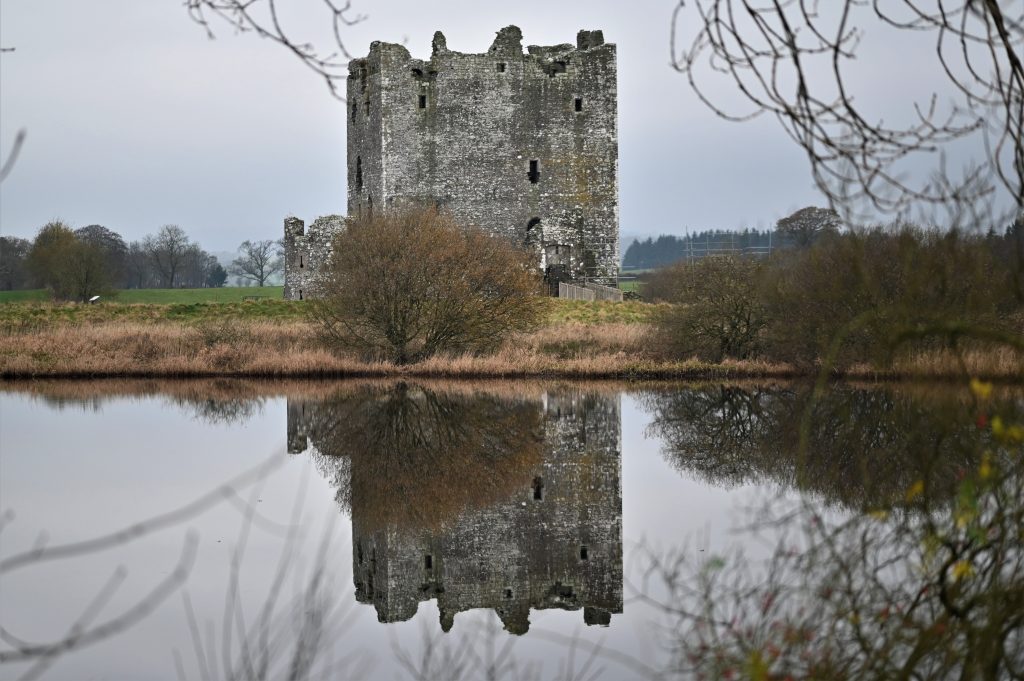Lapwings, Jingles and Hope – our team reports from Threave Estate
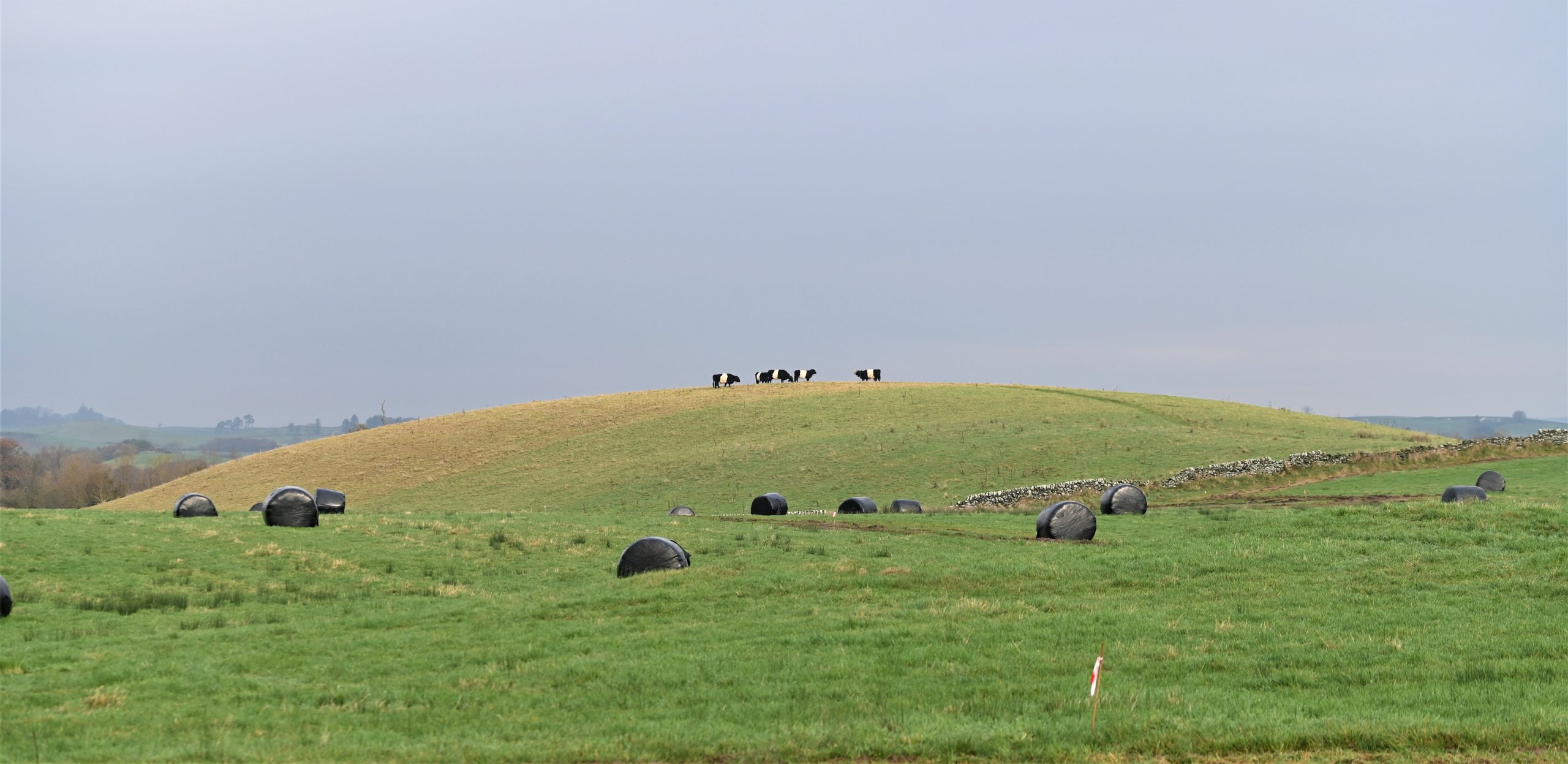
The GSA Biosphere’s Project Support Officer, Malcolm Haddow, has spent two days this month at Threave Estate at Castle Douglas, learning about their ambitious landscape restoration project. With its 100-year scope, the work at Threave is not focused on a single species but rather on encouraging biodiversity as a whole. The project’s overarching aim is to facilitate a natural and climate resilient species assemblage, and habitats that can survive and adapt to climate change today and in the future.
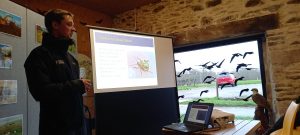 Jenna Cains (GSAB’s Community & Education lead) and Malcolm co-facilitated a mini seminar with Threave’s own ranger Phil and Galloway Glens’ McNabb Laurie for SRUC Wildlife and Conservation Management students. Phil gave an overview of the site and the awesome work being done by their team. McNabb gave an important overview on how to access funding for projects, a vital skill these future caretakers of the land will need in their careers. Jenna and Malcolm delivered a brief overview of the Biosphere and gave some guidance on dissertations and job hunting at an entry level (pictured left); for final-year students, both of these are at the forefront of their minds.
Jenna Cains (GSAB’s Community & Education lead) and Malcolm co-facilitated a mini seminar with Threave’s own ranger Phil and Galloway Glens’ McNabb Laurie for SRUC Wildlife and Conservation Management students. Phil gave an overview of the site and the awesome work being done by their team. McNabb gave an important overview on how to access funding for projects, a vital skill these future caretakers of the land will need in their careers. Jenna and Malcolm delivered a brief overview of the Biosphere and gave some guidance on dissertations and job hunting at an entry level (pictured left); for final-year students, both of these are at the forefront of their minds.
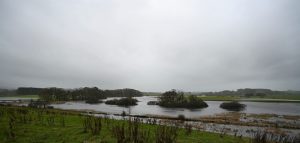 After the seminar the group explored the estate grounds. They were delighted to see so many lapwings (Vanellus vanellus), a Red List species that has seen a significant decline in recent decades. Seeing lapwings in good numbers is fantastic news, and hopefully some will return to nest at the site as the fruits of the landscape restoration grow. Signs of the project’s success can already be seen, with 35 metres of constructed embankments removed, allowing the River Dee to successfully flood Kelton Mains (pictured right). Extending the existing flood plains creates an ideal habitat for wetland species such as waders and waterfowl. It was inspiring to see the river system spread out over such a large area.
After the seminar the group explored the estate grounds. They were delighted to see so many lapwings (Vanellus vanellus), a Red List species that has seen a significant decline in recent decades. Seeing lapwings in good numbers is fantastic news, and hopefully some will return to nest at the site as the fruits of the landscape restoration grow. Signs of the project’s success can already be seen, with 35 metres of constructed embankments removed, allowing the River Dee to successfully flood Kelton Mains (pictured right). Extending the existing flood plains creates an ideal habitat for wetland species such as waders and waterfowl. It was inspiring to see the river system spread out over such a large area.
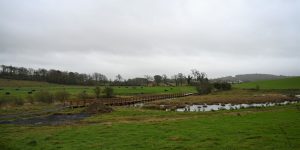 On Malcolm’s second visit attendees were joined by a local group of birders. It was a dry but murky day; good for birdwatching but less so for bird photography! On their walk Estate Manager David Thompson explained the work being carried out as part of the project. In partnership with Galloway Glens a new path and network of high spec boardwalks (pictured left) is being built to allow better access for visitors and a close-up look at the marsh system.
On Malcolm’s second visit attendees were joined by a local group of birders. It was a dry but murky day; good for birdwatching but less so for bird photography! On their walk Estate Manager David Thompson explained the work being carried out as part of the project. In partnership with Galloway Glens a new path and network of high spec boardwalks (pictured left) is being built to allow better access for visitors and a close-up look at the marsh system.
Threave Estate is unusual in its lack of fencing. Despite Threave having a small herd of Belted Galloways, volunteers and staff have removed over 8000 meters of fencing. So how do the cows stay where they’re wanted to be? Ingeniously, the herd is equipped with radio collars which sing a little jingle to keep the cows within their designated grazing area. If a cow ignores the jingle, it gets a small zap, which redirects it to the right place. We are truly in the future! As well as creating a much more aesthetically pleasing landscape, this style of livestock management is cheaper in the long term, as fences do not need to be replaced.
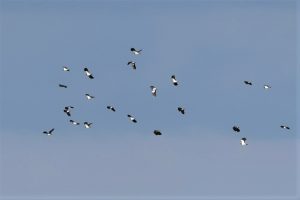 Even in the relatively brief time Malcolm spent at Threave he saw and heard a number of uncommon species including water rail, peregrine, redwing and whooper swans, highlighting the fact that the estate already has a high value for wildlife – note that it’s partly a RAMSAR site, SPA and SSSI. It is truly exciting to imagine what other wildlife will recolonize the area in the next 100 years. Malcolm says his money’s on nesting lapwing! Our photo on the right shows lapwings in flight.
Even in the relatively brief time Malcolm spent at Threave he saw and heard a number of uncommon species including water rail, peregrine, redwing and whooper swans, highlighting the fact that the estate already has a high value for wildlife – note that it’s partly a RAMSAR site, SPA and SSSI. It is truly exciting to imagine what other wildlife will recolonize the area in the next 100 years. Malcolm says his money’s on nesting lapwing! Our photo on the right shows lapwings in flight.
It has never been more important to encourage wildlife: we are in the worst biodiversity crisis and decline in human history. Every year globally 200-2,000 species become extinct because of human activity. The UK is sadly one of the most nature-depleted places in the world; we have already lost 421 species, not including species that were never described. It’s not just birds and mammals that are struggling, even our insects – wrongly assumed to be abundant – have declined by at least 60%.
This is why projects like the Threave Landscape Restoration Project are so important and by taking an innovative, biodiversity-based approach the National Trust for Scotland is protecting wildlife on an ecosystem level. It is with great interest and hope that we at the Galloway & Southern Ayrshire UNESCO Biosphere look forward to the project’s growth over the years – and generations – to come.
